7 Beef Marbling Scores to Know for Juicy and Flavorful Steaks
Understanding beef marbling is key to choosing flavorful, tender cuts. This guide decodes marbling scores, enhancing your steak game with rich, juicy options.
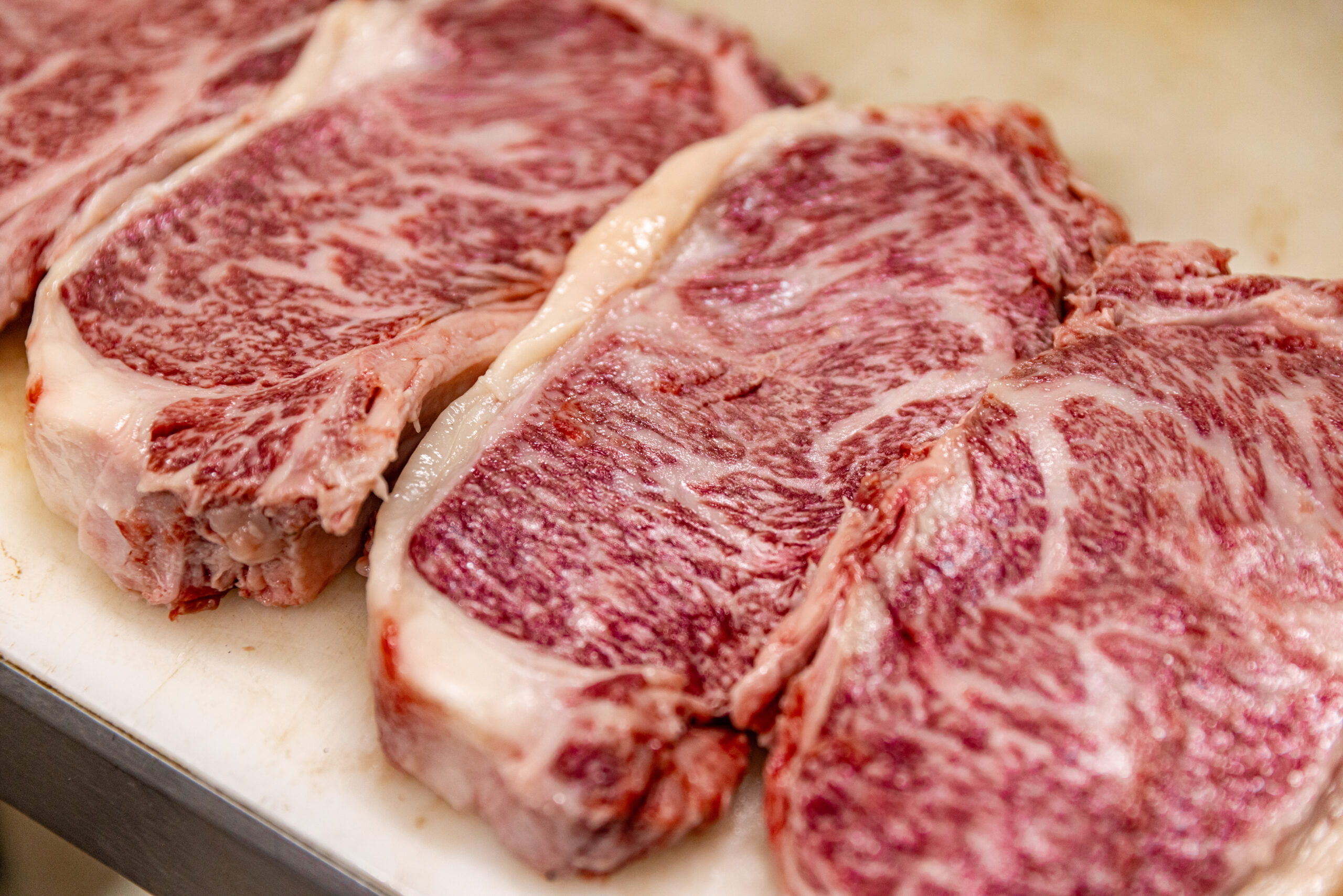
Understanding beef marbling scores is crucial for selecting the juiciest, most flavorful cuts. This guide will help you decode those scores and elevate your steak game.
Disclosure: As an Amazon Associate, this site earns from qualifying purchases. Thank you!
Understanding Beef Marbling
Beef marbling affects the flavor and tenderness of your steak. Here’s what you need to know.
What Is Beef Marbling?
Beef marbling refers to the white flecks of intramuscular fat within the meat. This fat melts during cooking, enhancing the steak’s richness and juiciness.
Why Is Marbling Important for Beef Quality?
Marbling boosts flavor and tenderness. Higher marbling scores generally mean a more delectable and satisfying eating experience due to the increased fat content.
Exploring the Beef Marbling Score Guide
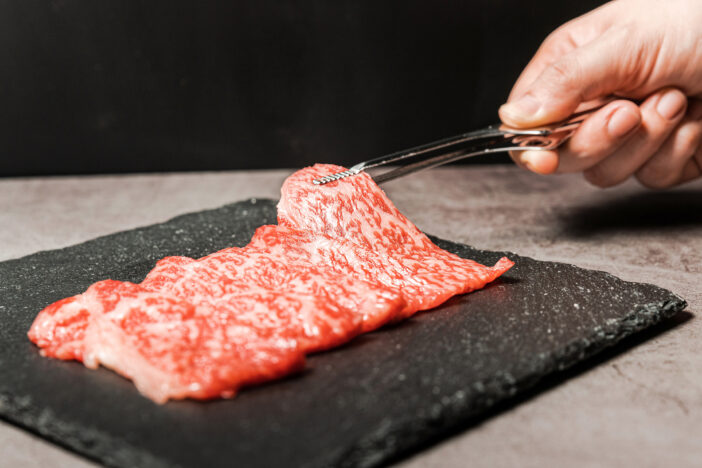
Beef marbling scores are crucial in selecting flavorful and tender steak cuts. Let’s break down how these scores are determined and interpreted.
How Is Beef Marbling Measured?
Inspectors grade marbling visually. They compare the intramuscular fat in a beef cut against a standardized chart. This process ensures consistency.
- USDA Scale: Uses Prime, Choice, and Select grades.
- Japanese Beef Marbling Standard (BMS): Ranges from 1 to 12, with 12 indicating the highest marbling.
Interpretation of Beef Marbling Scores
Understanding these scores helps you choose the best beef cuts. Here’s a quick guide:
- Prime: Most marbling, excellent for grilling.
- Choice: Moderate marbling, versatile for various cooking methods.
- Select: Leaner, best for slow cooking.
- BMS 8-12: Exceptional marbling, ideal for special occasions.
- BMS 5-7: High marbling, great for everyday indulgence.
- BMS 1-4: Low marbling, suitable for health-conscious diets.
Factors Influencing Beef Marbling
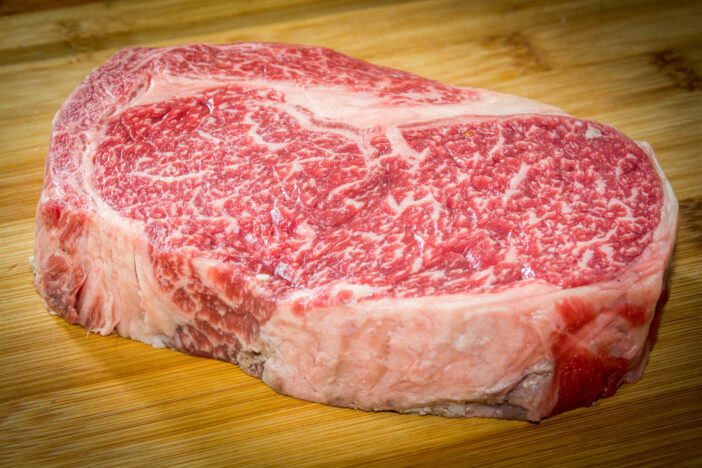
Understanding what affects beef marbling can help you choose the best cuts for your culinary needs.
Genetic Influences on Marbling
Breed matters. Cattle breeds like Wagyu and Angus are genetically predisposed to higher marbling. Opt for these breeds to get that rich marbling.
The Impact of Feeding Practices
Diet is key. Cattle fed with grain diets, especially corn, develop more intramuscular fat than those on grass diets. Look for grain-fed labels if you want superior marbling.
Age and Its Effect on Marbling
Age impacts fat distribution. Younger cattle, typically under 30 months, offer better marbling compared to older ones. Check age information to ensure you’re getting tender meat.
Comparing Marbling Standards Across the World
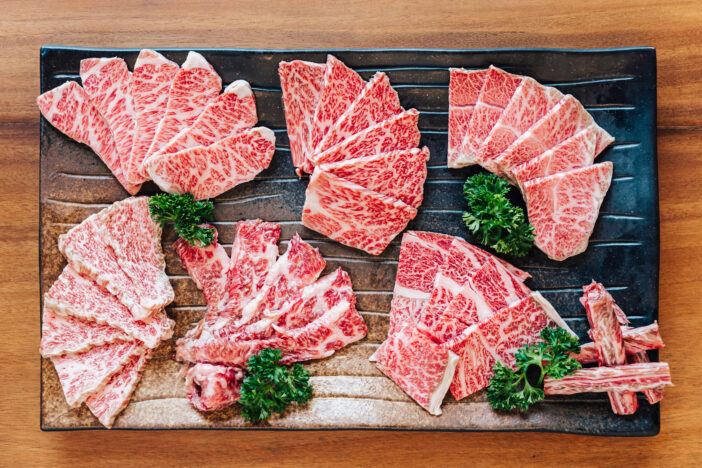
Different countries have unique marbling standards, aiding you in selecting the best beef cut for your culinary needs.
U.S. Beef Marbling Standards
The USDA grades beef into three prominent categories: Prime, Choice, and Select. Prime offers the highest marbling, bursting with flavor and tenderness. Choice strikes a balance, making it versatile for different cooking methods. Select has the least marbling, ideal for slow-cooking recipes.
Japanese Wagyu Marbling Standards
Japan uses the Beef Marbling Score (BMS) system for Wagyu beef, ranging from 1 to 12. Scores of 8-12 indicate the highest marbling, ensuring an unparalleled melt-in-your-mouth experience. Lower scores still offer quality but with less richness. The Japanese Meat Grading Association (JMGA) inspects and assures the consistency and quality of these grades.
- U.S. Prime vs. Japanese A5: Prime closely aligns with Wagyu’s A5 grade, though A5 boasts superior marbling.
- Australia: Uses MSA (Meat Standards Australia), which includes a dedicated marbling score ranging from 0 to 9. Their MSA grades resemble USDA Choice and Prime.
- Europe: Focuses more on lean meat and uses the EUROP grading system, prioritizing muscle over marbling.
| Country | Highest Grade | Marbling Score Range |
|---|---|---|
| U.S. | Prime | High |
| Japan | Wagyu A5 | 8-12 |
| Australia | MSA | 0-9 |
| Europe | EUROP E Grade | Low to Moderate |
How to Select the Best Marbled Beef
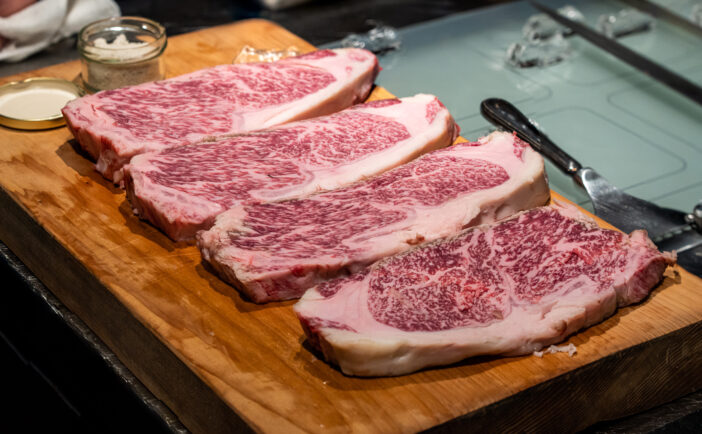
Selecting the best-marbled beef ensures you get a flavorful, tender cut every time. Follow these steps to make informed decisions.
Tips for Reading Beef Marbling Scores
- Identify the Grading System: U.S. beef uses USDA Prime, Choice, and Select. Japanese Wagyu follows the BMS (1-12). Australia’s MSA scores range between 100-1199.
- Look for Higher Scores: Higher marbling scores mean more intramuscular fat, translating to rich flavor and tenderness. For Wagyu, aim for BMS 8-12, USDA Prime scores highest in the U.S.
- Examine the Visual Marbling: Check for white flecks and streaks within the meat. Even distribution indicates higher quality. Avoid cuts with large, uneven fat deposits.
- Specialty Butchers: Local butchers often provide high-quality marbled beef. They can offer personalized advice and custom cuts.
- Online Retailers: Sites like Snake River Farms, Crowd Cow, and Holy Grail Steak offer premium marbled beef, including Wagyu and USDA Prime.
- Grocery Stores: High-end grocery stores like Whole Foods or Costco usually stock well-marbled beef. Look for clear labeling on marbling scores.
Cooking Tips for Marbled Beef
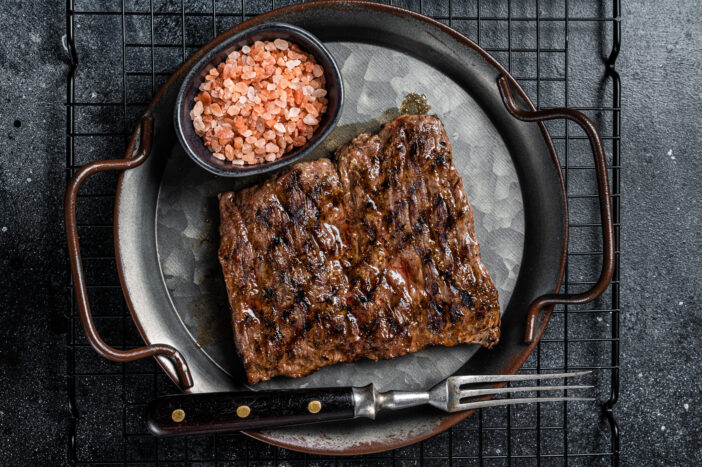
Best Cooking Methods for Marbled Beef
- Grill: Use high heat for a quick sear, then finish on lower heat for even cooking. The sear locks in juices.
- Pan-Seared: Get a hot cast-iron skillet, sear both sides, then finish in the oven. Adds a perfect crust.
- Sous Vide: Cook it in a vacuum-sealed bag at precise temperatures. Finish with a sear for texture.
- Broil: Suitable for thinner cuts. Keep a close eye to prevent overcooking.
Key Tips
- Overcooking: Too much heat renders fat and dries the meat. Use a meat thermometer to check doneness.
- Skipping Rest Time: Rest meat for at least 5 minutes. This helps juices redistribute.
- Improper Seasoning: Don’t over-season. Let the beef’s natural flavors shine.
- Using Cold Beef: Bring meat to room temperature before cooking. Ensures even heat distribution.
Following these tips ensures you maximize the flavor and tenderness of your marbled beef.
Frequently Asked Questions
What is beef marbling and why is it important?
Beef marbling refers to the intramuscular fat interspersed within the muscle. It’s vital because it enhances the flavor, tenderness, and juiciness of the steak, making it more enjoyable to eat.
How are marbling scores determined?
Marbling scores are determined using grading systems like the USDA Scale and the Japanese Beef Marbling Standard (BMS), which assess the amount and distribution of intramuscular fat.
What factors influence beef marbling levels?
Factors influencing beef marbling include breed genetics, feeding practices, and the age of the cattle. Specific breeds like Wagyu are known for higher marbling.
What are the global marbling standards?
Global marbling standards include the U.S. USDA Scale, Japanese Wagyu BMS, Australian MSA, and European EUROP grading systems, each with unique criteria for assessing marbling.
Which steak cuts have high marbling content?
Prime cuts like USDA Prime and Japanese Wagyu A5 are known for their high marbling content, offering superior flavor and tenderness.
Where can I buy quality marbled beef?
Quality marbled beef can be purchased from specialty butchers, online retailers, and high-end grocery stores that offer premium cuts.
What are some cooking tips for marbled beef?
Cooking tips for marbled beef include methods like grilling, pan-searing, sous vide, and broiling. It’s crucial to avoid overcooking, allow the meat to rest, season properly, and use room-temperature beef for optimal results.
Why is resting time important for marbled beef?
Resting time allows the juices to redistribute throughout the meat, ensuring it remains juicy and tender when sliced.
How can I avoid common mistakes when cooking marbled beef?
Avoid common mistakes such as overcooking, skipping resting time, improper seasoning, and using cold beef. These errors can affect the flavor and tenderness of the steak.
What is the best way to season marbled beef?
Simple seasoning with salt and pepper is typically sufficient to enhance the natural flavors of marbled beef. Avoid overpowering the meat with heavy marinades or spices.






